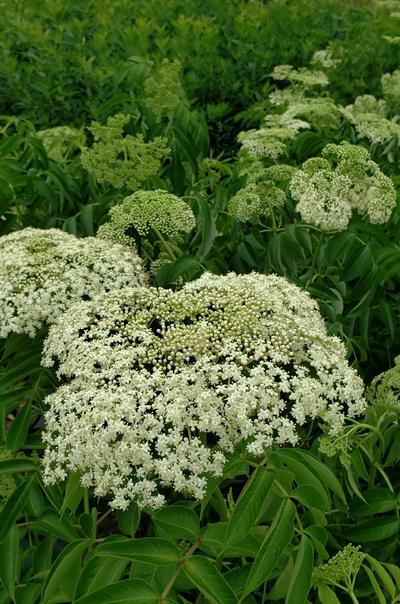Sambucus canadensis
A profusion of tiny lemon-scented creamy white flowers appear in dense, flat-topped clusters up to 10” across in early summer. Flowers are followed by clusters of black elderberry fruits in late summer. Fruits are sometimes used to make jams, jellies, pie fillings, and elderberry wine. The plants form large lumps with attractive dissected foliage.
Butterflies and other insects are attracted to the blooms. The fruits are eaten by mammals and many species of songbirds. It makes an excellent nesting site for birds and provides cover for quail and pheasants.
Group or mass in naturalized areas where suckering spread is desired. Can be used in moist shrub borders, as a screen or background plant, around streams, ponds, ditches, or low spots.
- Native, deciduous shrub
- Fragrant white flower clusters produce edible berries
- Good for naturalizing
- Category:
Shrub,
Native
- Hardiness Zone: 4-8
- Height: 5-12 ft
- Spread: 6-10 ft
- Bloom Color:
White
- Foliage Color:
Green
Login for pricing


